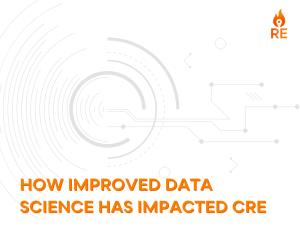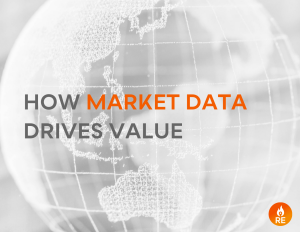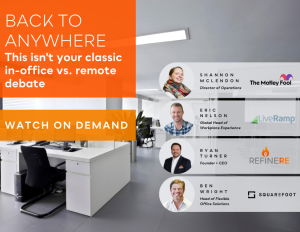Feature
How corporate real estate teams can move from passive to active ESG strategy
Why companies who aren’t actively investing in sustainability practices are already leaps and bounds behind the rest
ESG initiatives are undoubtedly the next big thing in the corporate real estate industry – are you leading the pack or lagging behind?
We recently hosted a webinar on the intersection of corporate real estate and sustainability in which consulting firm Verdantix presented their latest research on the current state of ESG initiatives amongst commercial real estate companies. One theme from this presentation was the widespread shift among large corporates from passive to active sustainability practices.
This transition is certainly an inflection point for leaders in CRE, facilities, workplace, and (most obviously) sustainability, as these are the functions the C-suite will hold most responsible for change.
Keep reading to learn more about how and why this paradigm shift is taking place and the real business implications of it all.

Accountability and Ownership
While accountability for sustainable real estate practices might have previously fallen solely on a VP of Sustainability or someone in a similarly siloed role, we’re seeing a shift toward more widespread ownership of ESG metrics and KPIs.
As opposed to the last decade, accountability now lies with each business unit’s VP and oversight from the organization’s CEO.
Speaking of the CEO, a new set of expectations has arisen in terms of involvement. Whereas a C-Suite might have previously been all talk (speaking about sustainability at conferences or alluding to vague notions of ESG practices in sustainability reports), high-level executives are now actively including ESG goals as a core component of their business strategies and reporting to the board on progress in the area.
Additionally, where the CEO might have previously taken a backseat to sustainability, he or she is now actively pursuing best practices and new tactics for improving in that area.
Financial Ramifications
CEOs aren’t the only ones stepping up to the plate with sustainable business alignment. Where a Chief Financial Officer would have simply complied with investor requests for ESG practices or resolved differing opinions, CFOs are now expected to think ahead.
Investors carry the expectation that the CFO is responsible for developing long-term strategic plans for reaping financial benefits from ESG integration and mitigating investment risks along the way.
Enforcement
In opposition to the days of passive ESG practice, the framework for enforcing sustainability has moved from surface-level ESG metrics (otherwise known as vanity metrics) to putting in place a clear ESG standard with direct ties to compensation.
While many organizations (especially mid-size businesses or those that are new to ESG altogether) are not ready to link executive pay with sustainability performance, many larger organizations are leading the way and beginning this trend.
Catch up on the latest from RefineRE:
Scope of Sustainability Strategies
As we saw in the 2010s, the discussion of sustainability was limited to urgent obstacles rather than long-term planning. These days, the role of ESG strategy in an organization is so much more than that – it’s about implementing multi-year plans with attainable carbon neutrality targets based on data-driven strategy, research, and careful planning.
Sustainability is no longer a fire drill – it’s a core component of business strategy.
Mindset and Transparency
One of the more prominent changes from the previous decade to the one we’re in right now is this – mindset. While an annual report might have given only enough ESG data to skim the surface, there’s now an unprecedented level of transparency.
Forward-thinking organizations are shifting the way they think and talk about ESG integration to their stakeholders and shareholders. It’s no longer about creating a sustainability “angle” or narrative. Rather, it’s about communicating honestly and openly about progress to gain trust, start a conversation, boost ESG criteria ratings, and ultimately advance the business.
Making the shift to active sustainability
If the thought of shifting from passive to active sustainability seems daunting or nearly impossible, you’re not alone. Many organizations struggle to find realistic and attainable ways to create accountability, transparency, and strategy surrounding ESG efforts.
The key to moving forward is taking things slowly and evaluating where you are right now. If you don’t have data on your company’s key ESG KPIs like carbon emissions, electrical spend, the percentage of renewable energy vs. non-renewable energy you’re consuming, that’s where you need to start.
Knowing which steps to take will be entirely dependent on your knowledge of where you stand at this moment. Otherwise, there’s a high possibility that you’ll allocate your resources in all the wrong places or set ESG goals that are unattainable at this stage.
To hear from a panel of experts from Mastercard, Verdantix, and more regarding the intersection of ESG issues and corporate real estate, watch the latest webinar from RefineRE.
Wondering which tools and resources are available to your team as you embark on an ESG journey? Learn more here.
Catch up on the latest from RefineRE:
Schedule a consultation with RefineRE
Here's what you can expect:
- ‣ A 15-minute call
- ‣ Identify your biggest challenges
- ‣ Explore automated solutions to optimize your strategy





